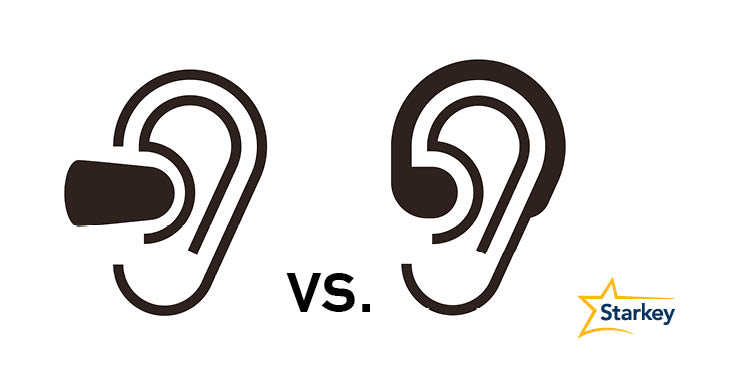Today’s world is often very noisy. And with noise being one of the top two causes of hearing loss — and the only one that is preventable — we thought it was a good reason to discuss hearing protection devices and how they compare to hearing aids.
Hearing protection devices
Hearing protection devices are designed to dampen the noise within the environment so that the wearer can be in the noisy environments for longer without potential damage to their hearing. Hearing protection devices can be either passive (with no electronic components) or active (with electrical components for sound processing). Today I want to focus on electronic hearing protection devices.
SoundGear Phantom is the newest electronic hearing protection device from Starkey. It is the world’s first rechargeable, custom-fit electronic hearing protection device that also allows for 2.4 GHz Bluetooth compatibility with select devices. The noise reduction rating of Phantom is 22 dB and it can run 23 hours on a full charge.
The difference between passive and electronic hearing protection devices is that electronic devices simultaneously allow the wearer to hear environmental sounds and conversations when no loud sound is present, so you can keep them in while you’re working or participating in a noisy activity.
SoundGear Phantom is pre-programmed for the most common hearing loss range, so the wearer is able to have access to sound within their environment while also utilizing electronic hearing protection. With the casing of SoundGear Phantom and other hearing protection devices not having an onboard vent, the wearer is also protected from the pressure wave that occurs from loud sounds, such as gunshots or fireworks.

Hearing aids
Evolv AI hearing aids adapt to the environment 55 million times per hour and are designed to provide a genuine sound quality across all listening environments. Evolv AI are designed with an element of electronic hearing protection within them as well, but with an open fit or a vented earmold, you are not getting full protection from the pressure wave. This is where careful consideration is needed to determine if you are looking for hearing protection or a hearing aid.
While hearing protection devices are advancing in technology — and ones like SoundGear Phantom are designed to provide minor amplification and access to sound — their primary goal at the end of the day is to protect the wearer’s hearing. Hearing aids, on the flip side, are designed to give access to the wearer’s full environment while providing minimal protection from loud transient sounds.
Which one do you need?
We are beginning to see avid hunters, people who work with power tools and heavy equipment, musicians, or those involved in loud recreational and occupational activities who need hearing protection but also want hearing enhancement. The question that often arises is, “is there a device that does both?”
While products like SoundGear Phantom do offer a little of each, to fully protect your hearing in a noisy environment you need a true hearing protection device. And for increased audibility in difficult listening environments or for those with diagnosed hearing loss, hearing aids are the best piece of equipment to use.
Talk to your hearing care professional about your auditory concerns and together you can decide if you need hearing aids, hearing protection, or a combination of the two! Don’t have a hearing care professional? We can help. Simply type your zip code in here and you’ll find a list of local hearing professionals and audiologists who you can test your hearing, consult with about your options, and even demo our latest hearing aid and hearing protection technology.
Join our community of Starkey Blog subscribers
Want a week's worth of Starkey blogs delivered to your inbox? Sign up here.
